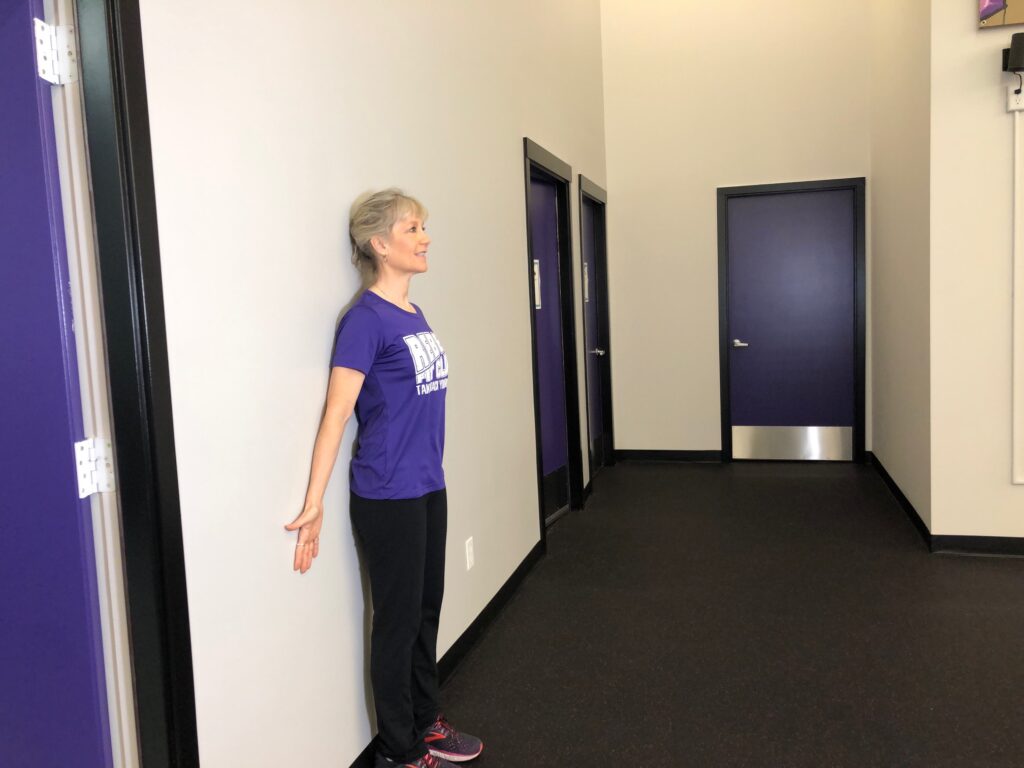
A gentleman with stooped posture from Parkinson’s recently came in for a personal training session complaining of lower back pain. He showed me a list of exercises someone gave him, and on it were “Wall Leans.”
I asked him to show me what this exercise was. He said, “You know, the one where you straighten up against the wall.” He then went to the wall, turned his back, and went through the steps. Heels against the wall, touching your back and head to the wall. Then he said, “It hurts my back more and I’m afraid I’ll fall forward.”
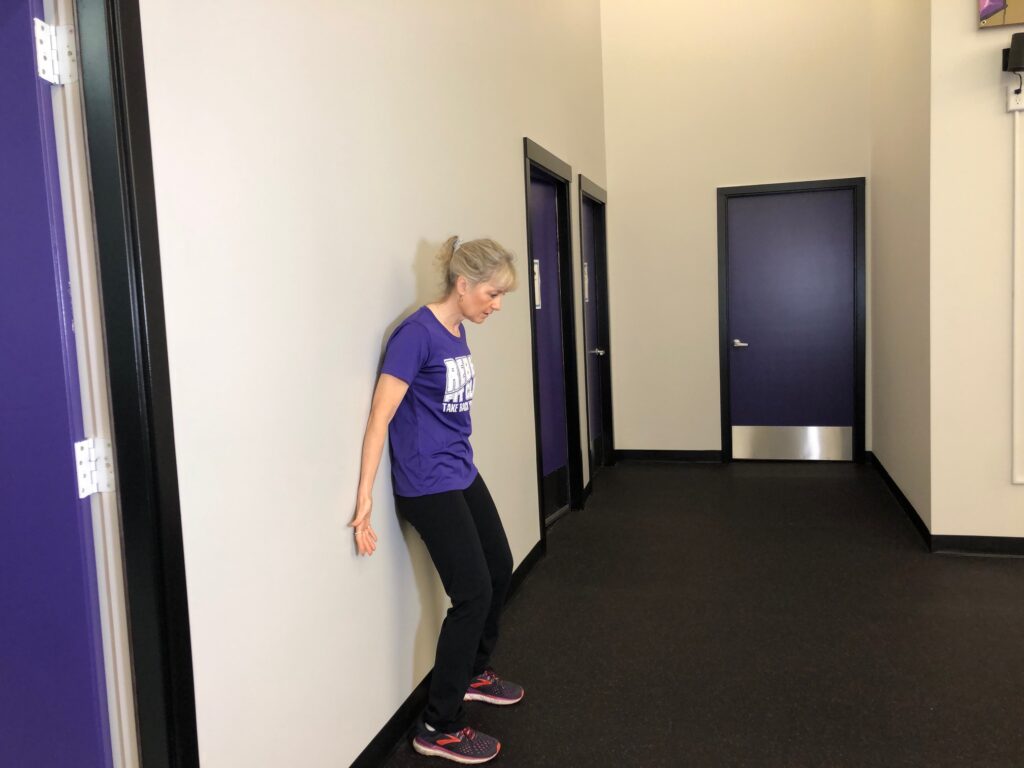
Of course it hurt his back! And yes, he was pitched “falling” forward.
If you have pretty good posture, standing up against a wall to straighten your back is a good exercise and it feels good.

However, if you have stooped posture from PD, that probably means your anterior (front) muscles are really tight, your pelvis is tilted back, your upper back is rounded forward, and your head protrudes forward.
Now you’ve been instructed to put your back to the wall and stand up straight? There is no way! Several things will result:
You may get your hips to touch the wall, but you will feel like you’re going to fall forward.
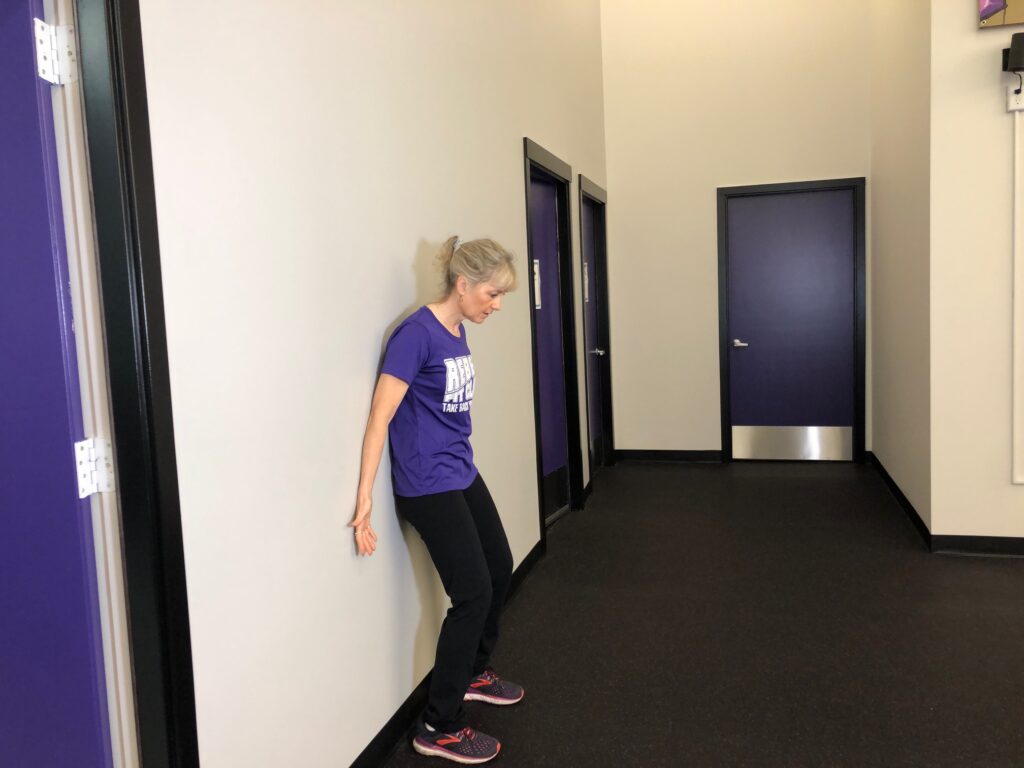
If you do get your head to touch, you probably pulled your hips away from the wall, putting pressure on your lower back, or you tipped your chin up.
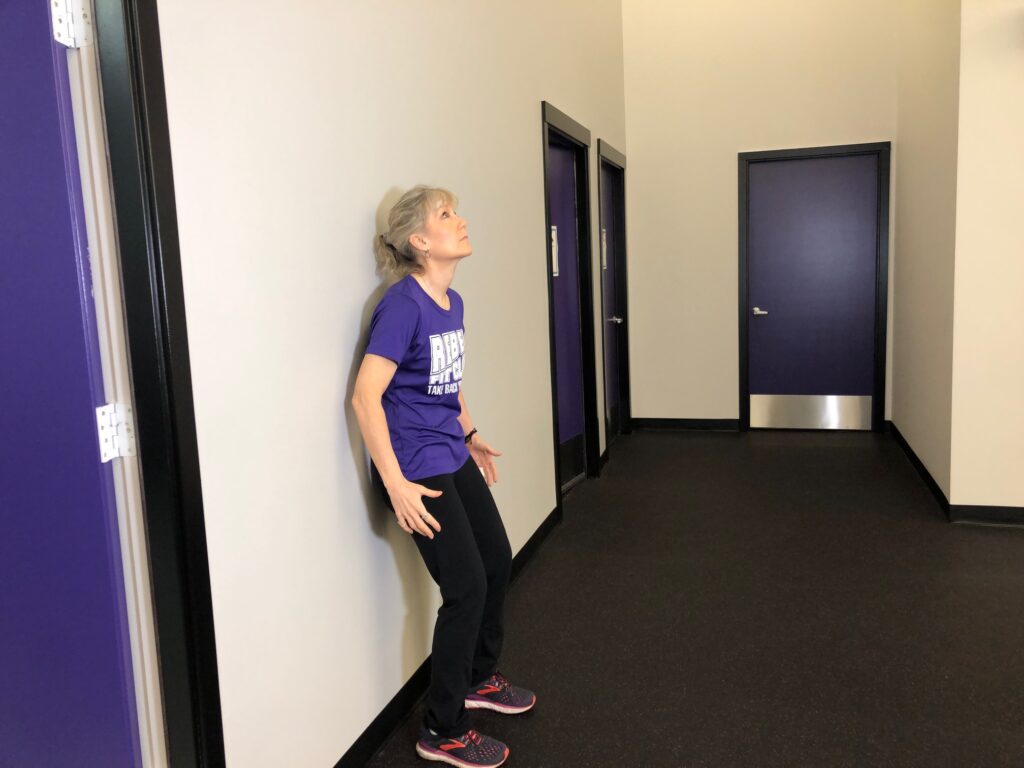
This is not a neutral position, it doesn’t correct your posture, and it could hurt your neck!
However, a few simple modifications can make this exercise safer and more effective. Watch my video below to see how I modified this exercise to help someone with a stooped posture:
Here are the steps to modify this exercise:
- Stand several inches away from the base of the wall.
- Touch your hips and lower back to the wall with your arms extended to each side. Place the back of your hands against the wall with your palms facing forward.
- Put a small squishy ball or pillow behind your upper back or neck where it starts to come away from the wall and round forward. If you can look straight ahead and it feels like you are supported, it’s usually in a good place.
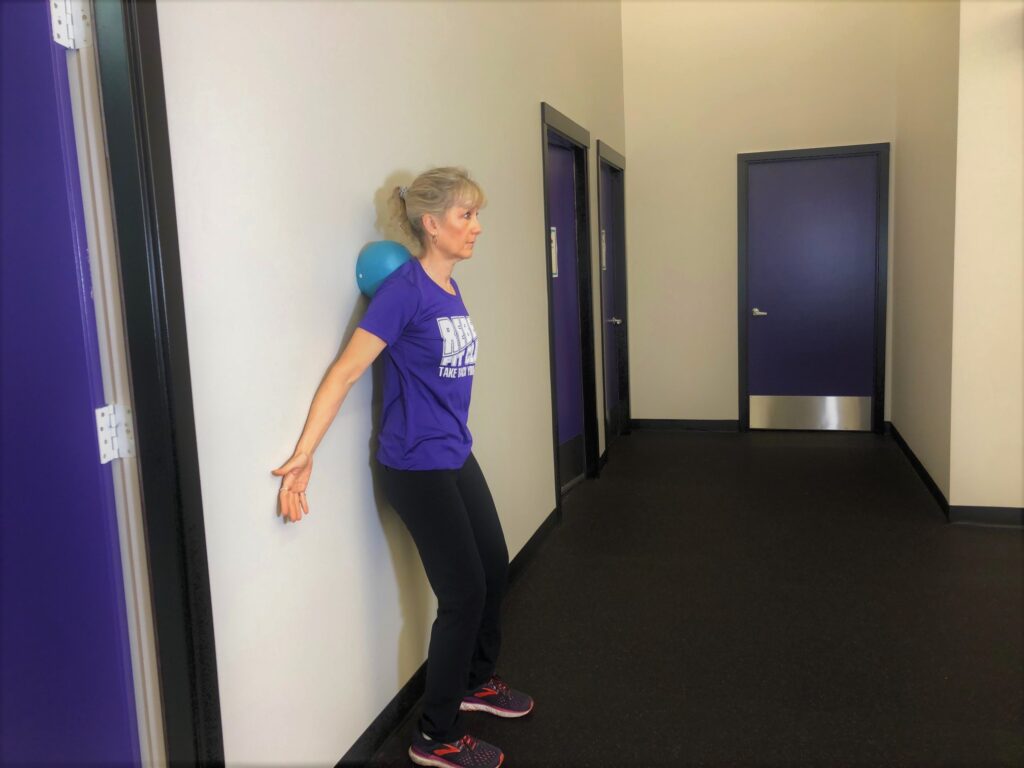
- Push slightly into the wall with the back of your hands to activate your back muscles, and think “TALL.”
Do this once a day to start. You’ll probably need help with the ball placement at first.
If it hurts or you feel like you are going to fall forward, you’re not in a good position or this isn’t the exercise for you.
Please always tell your physical therapist, trainer, or coach if an exercise hurts your body. It’s not complaining, it’s “reporting,” and your feedback is crucial to your results.
Try this modification and see if you feel taller!
